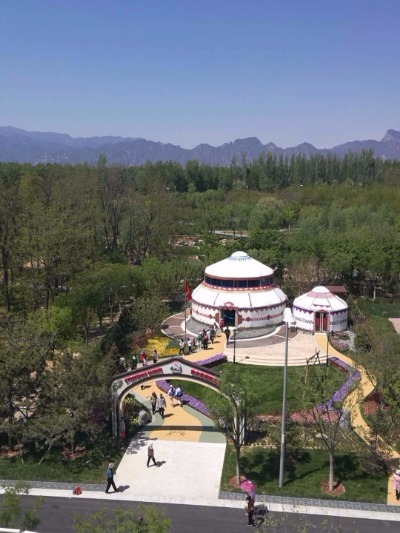 |
|
The Kyrgyz pavilion features a garden and two rooms built like yurts, which are traditional Kyrgyz tent dwellings.[Photo provided to China Daily] |
The picturesque garden hosts over 60 varieties of polychromatic flowers endemic to Kyrgyzstan.
The larger yurt presents products from Kyrgyzstan. The smaller one showcases Kyrgyz food and cuisine.
"We tried to include as many Kyrgyz elements as possible in the pavilion's design," says Erkebaev, who has been in charge of the pavilion's operations from the beginning.
"The Chinese side has given us a lot of help in transportation and coordination."
All materials were purchased in, and transported from, Kyrgyzstan. The decorations and their designs were completed by Kyrgyz artists, Erkebaev says.
"We noticed the climate difference between the expo environment and Kyrgyzstan's, and made adjustments in construction and decoration materials," he says.
The pavilion features environmentally friendly lighting, heat and waterproofing.
The country has also brought over 800 products belonging to 17 categories to the expo.
Kyrgyzstan hopes to showcase its distinctive organic plateau food and landscapes, Erkebaev says.
The country is known for its pristine environment and quality agriculture.
It produces honey, breads, mineral water, natural juices and wines.
"It's the first time for Kyrgyzstan to bring so many farm products to China at an expo, and our ultimate purpose is to help local enterprises and farmers bring natural and quality products to the Chinese market," Erkebaev says.